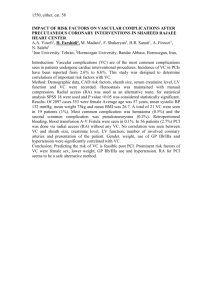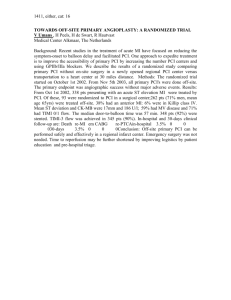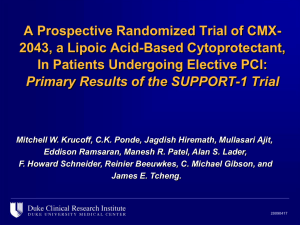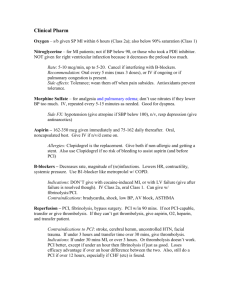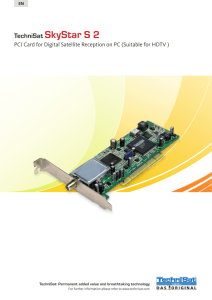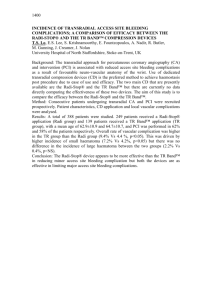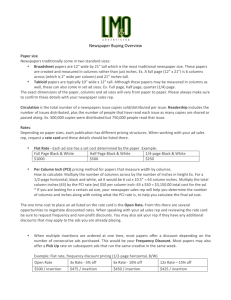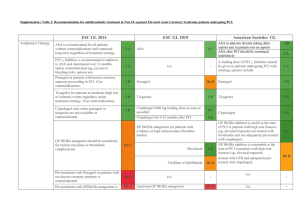peri-procedural hemoglobin drop and creatinine
advertisement
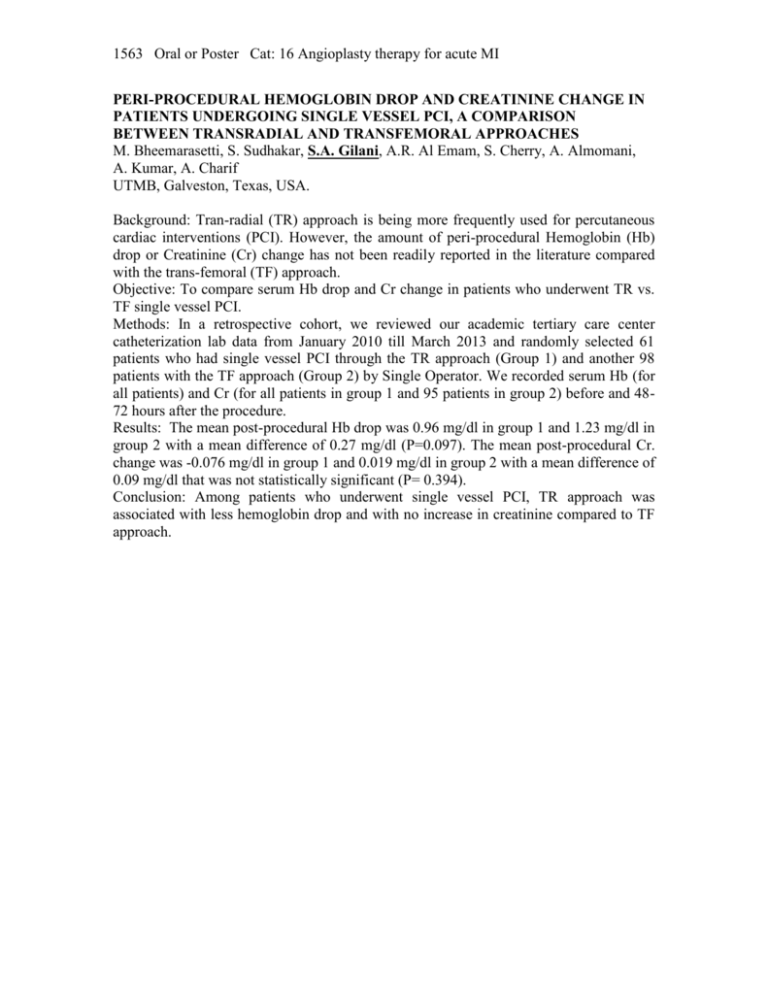
1563 Oral or Poster Cat: 16 Angioplasty therapy for acute MI PERI-PROCEDURAL HEMOGLOBIN DROP AND CREATININE CHANGE IN PATIENTS UNDERGOING SINGLE VESSEL PCI, A COMPARISON BETWEEN TRANSRADIAL AND TRANSFEMORAL APPROACHES M. Bheemarasetti, S. Sudhakar, S.A. Gilani, A.R. Al Emam, S. Cherry, A. Almomani, A. Kumar, A. Charif UTMB, Galveston, Texas, USA. Background: Tran-radial (TR) approach is being more frequently used for percutaneous cardiac interventions (PCI). However, the amount of peri-procedural Hemoglobin (Hb) drop or Creatinine (Cr) change has not been readily reported in the literature compared with the trans-femoral (TF) approach. Objective: To compare serum Hb drop and Cr change in patients who underwent TR vs. TF single vessel PCI. Methods: In a retrospective cohort, we reviewed our academic tertiary care center catheterization lab data from January 2010 till March 2013 and randomly selected 61 patients who had single vessel PCI through the TR approach (Group 1) and another 98 patients with the TF approach (Group 2) by Single Operator. We recorded serum Hb (for all patients) and Cr (for all patients in group 1 and 95 patients in group 2) before and 4872 hours after the procedure. Results: The mean post-procedural Hb drop was 0.96 mg/dl in group 1 and 1.23 mg/dl in group 2 with a mean difference of 0.27 mg/dl (P=0.097). The mean post-procedural Cr. change was -0.076 mg/dl in group 1 and 0.019 mg/dl in group 2 with a mean difference of 0.09 mg/dl that was not statistically significant (P= 0.394). Conclusion: Among patients who underwent single vessel PCI, TR approach was associated with less hemoglobin drop and with no increase in creatinine compared to TF approach.

